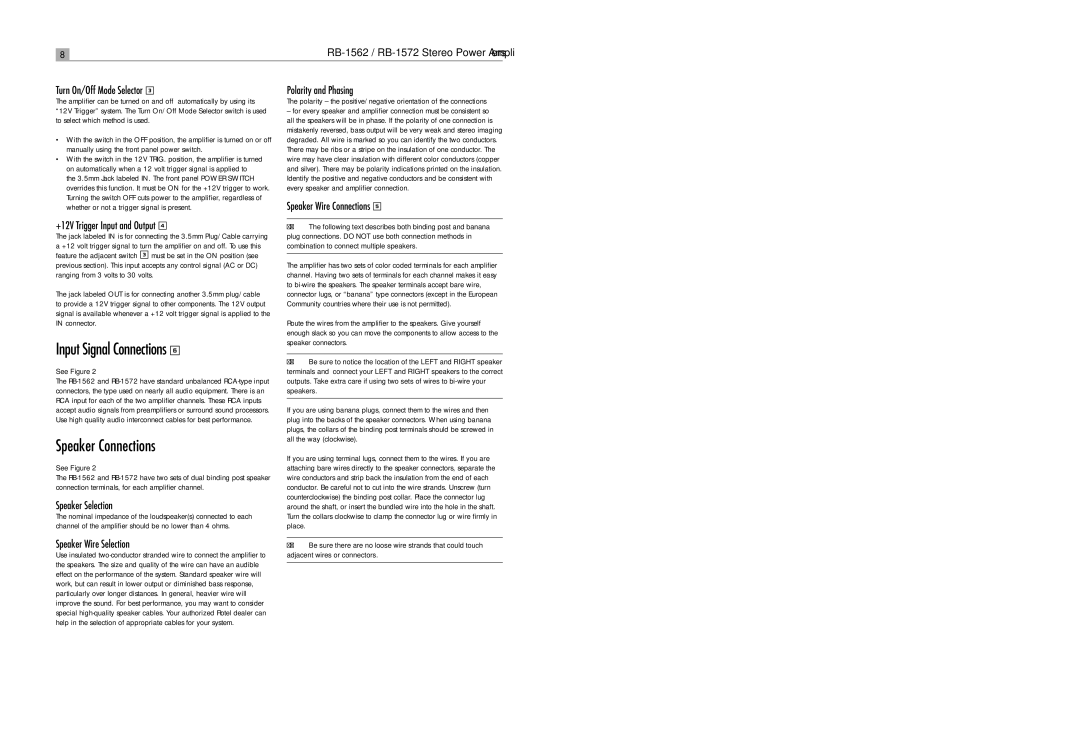RB-1572 specifications
The Rotel RB-1572 is a high-performance stereo power amplifier, designed to meet the needs of audiophiles seeking superior sound quality in their music playback systems. This amplifier embodies Rotel's commitment to crafting high-fidelity audio equipment with a focus on performance and value.One of the key features of the RB-1572 is its robust power output. With 120 watts per channel into 8 ohms and 200 watts per channel into 4 ohms, this amplifier is designed to drive a wide range of speakers with ease. This level of power ensures an immersive listening experience, ample enough to fill large rooms with dynamic and detailed sound.
The RB-1572 utilizes Rotel's proprietary Class AB amplification technology. This technology combines the benefits of both Class A and Class B operation, allowing for high efficiency and low distortion. The result is a smooth and warm sound that preserves the nuances and intricacies of the original recording. Additionally, the amp features a high-capacity power supply, which contributes to its dynamic performance by providing the necessary headroom for transient peaks in music.
Constructed with quality components, the RB-1572 features a toroidal transformer, ensuring low noise and high stability during operation. The amplifier also employs high-grade capacitors for improved power delivery and overall sound quality. The chassis is designed for optimal heat dissipation, ensuring long-term reliability without compromising audio performance.
Connectivity options abound with the RB-1572, including both XLR balanced and RCA unbalanced inputs, allowing for flexible integration into various audio systems. The linkage capability via trigger input and output ensures synchronization with other Rotel components, making it easy to build a cohesive audio setup.
User-friendly features such as a front-panel power button and an LED status indicator enhance the overall usability of the amplifier. Its sleek and elegant design makes it a visually appealing addition to any audio system, fitting seamlessly into modern home entertainment setups.
In conclusion, the Rotel RB-1572 is a well-engineered power amplifier, combining exceptional sound quality with high-performance specifications. Its cutting-edge technologies and robust build make it an attractive option for audio enthusiasts desiring a refined listening experience while maintaining value and reliability in their audio equipment.

